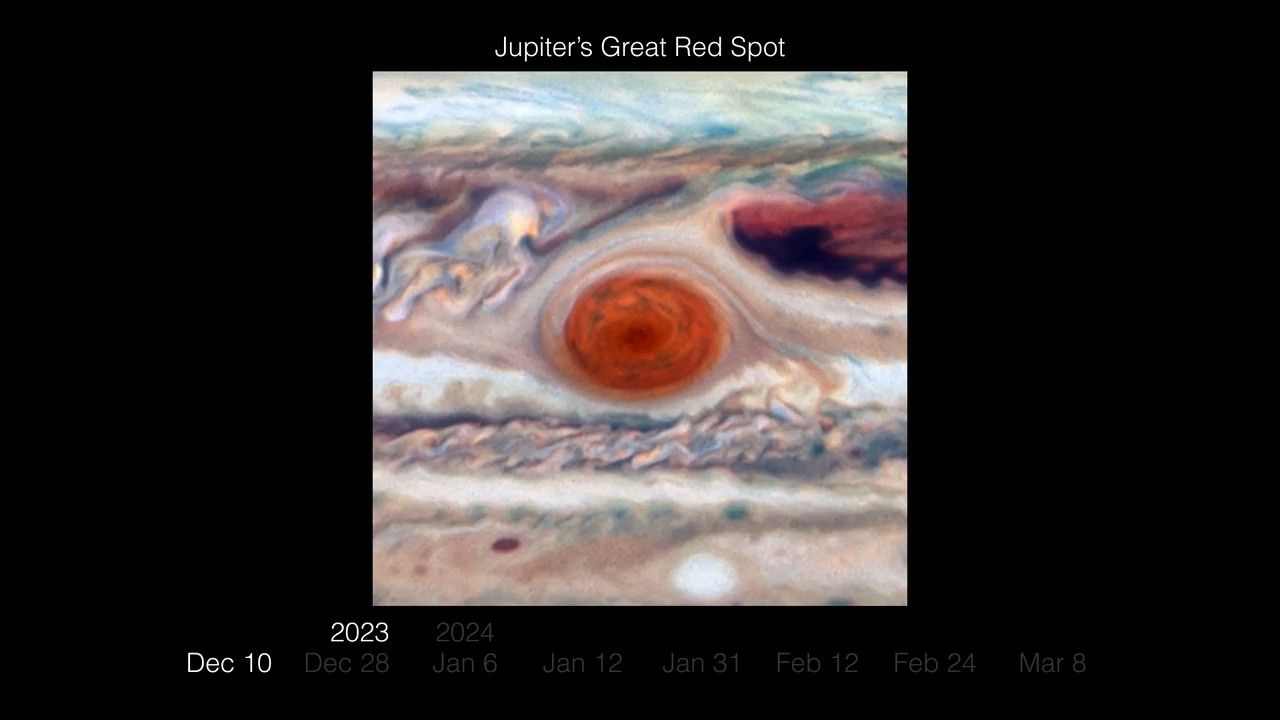1 min read
Observations of Jupiter Over Time
This animated diagram shows the position of Earth relative to Jupiter during a period spanning approximately 90 days (between December 2023 and March 2024) when the giant planet Jupiter ranged from 391 million to 512 million miles from Earth. During this period the Hubble Space Telescope monitored changes in Jupiter's atmosphere as part of the observing programs led by Amy Simon of NASA Goddard Space Flight Center in Greenbelt, Maryland. Jupiter's orbital period is approximately 12 years. The angular size of the planet shrinks in Hubble's view, as faster-moving Earth pulls ahead of the giant planet.
- Release DateOctober 9, 2024
- Science ReleaseNASA’s Hubble Watches Jupiter’s Great Red Spot Behave Like a Stress Ball
- CreditNASA, ESA, Joseph DePasquale (STScI)
Related Images & Videos

Close-up of Jupiter's Great Red Spot (8-Panel)
Using Hubble Space Telescope data spanning approximately 90 days (between December 2023 and March 2024) when the giant planet Jupiter ranged from 391 million to 512 million miles from Earth, astronomers measured the Great Red Spot's size, shape, brightness, color, and vorticity...

Full Disk of Jupiter (8-Panel)
Using Hubble Space Telescope data spanning approximately 90 days (between December 2023 and March 2024) when the giant planet Jupiter ranged from 391 million to 512 million miles from Earth, astronomers measured the Great Red Spot's size, shape, brightness, color, and vorticity...

Jupiter Great Red Spot Movie
This time-lapse movie is assembled from Hubble Space Telescope observations spanning approximately 90 days (between December 2023 and March 2024) when the giant planet Jupiter ranged from 391 million to 512 million miles from Earth. Astronomers measured the Great Red Spot's...
Share
Details
Claire Andreoli
NASA’s Goddard Space Flight Center
Greenbelt, Maryland
claire.andreoli@nasa.gov




























